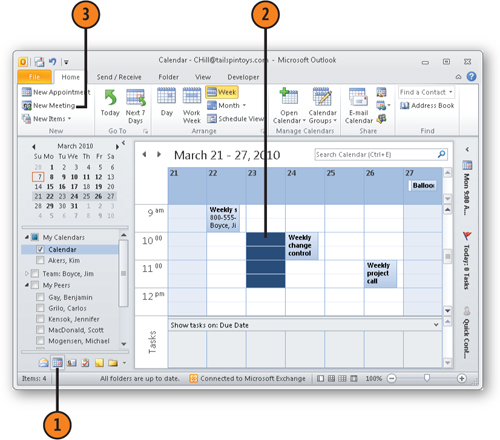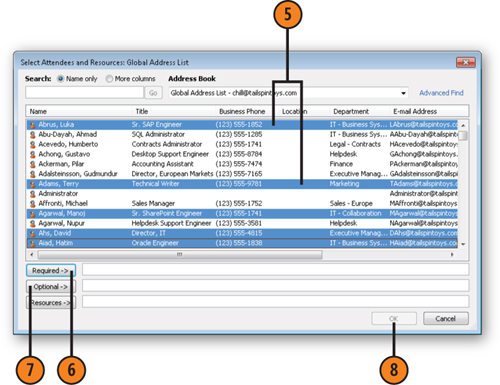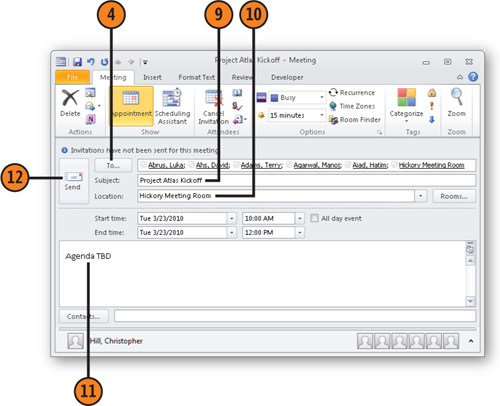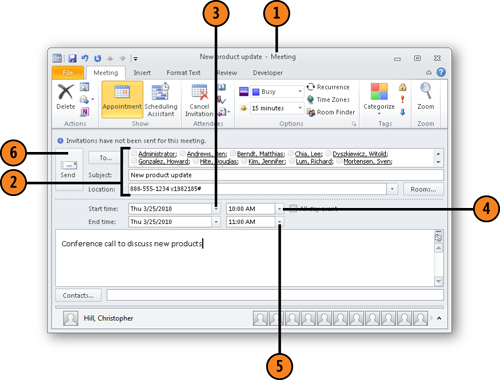A meeting is an activity (often a physical meeting or
conference call) that involves other people and sometimes resources. A
resource can be a conference room, VCR, slide projector, telephones,
laptop computer, or other equipment. Usually a meeting involves you and
at least two other people (but can certainly be just you and one other
person). Outlook sends a meeting invitation to every person you
designate, and they can accept or reject the request or propose a new
time for the meeting.
1. Create a Meeting in a Block of Time
Click the Calendar icon on the Navigation Pane.
Highlight a block of time on the meeting day for the meeting.
Click New Meeting on the Home tab.

Note:
You can use the
Scheduling Assistant to help you find a time that is open for all
invitees, and you can also identify available resources. To switch to
the Scheduling Assistant view, click Scheduling Assistant in the Show
group on the Meeting tab of the ribbon.
Select attendees and resources from the Address Book, or type the addresses manually.
Click Required if the invitee needs to attend.
Click Optional if the invitee isn’t required to attend.

Click OK when you are done.
Type a description of the meeting in the Subject box.
Type the location of the meeting in the Location box.
Add notes, directions, or comments for the meeting as needed.
Click Send.

Note:
When you type your meeting
subject, keep it short but descriptive. "Team Meeting" may not be
enough if people are members of multiple teams. Use something specific
like "Development Team Meeting" for your description.
2. Change the Meeting Date and Time
Outlook
uses the currently selected date and time by default when you create a
new meeting request. You can change the date and time as you need to,
rather than accept the default.
Add attendees, a subject, and a location for the meeting.
Click the down arrow in the Start Time date field, and select the starting date.
Click the down arrow in the Start Time hour field, and select the starting time of the meeting.
Click the down arrow in the End Time hour field, and select the ending time of the meeting.
Click Send.

Note:
Make sure that your
attendee list has correct e-mail addresses. If you attempt to send the
meeting request to someone not in one of your address books, Outlook
lets you know that the person can’t be validated.
Note:
Outlook provides the
Scheduling Assistant to help you set up meetings with other people in
your organization. The Scheduling Assistant lets you see other people’s
schedules if they have mailboxes in the same Exchange Server
environment.